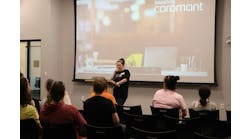Joe Feeley is editor in chief for Control Design and Industrial Networking.
Peter Zornio, chief strategic officer at Emerson Process Management, said one thing that makes this generation-changing issue more acute, at least in the U.S. and western Europe, is "as the boomers have retired, there's been a growing hole that wasn't being continually backfilled by the Gen X era. That was during a period in manufacturing about 20 years ago of not much hiring and an increase in outsourcing of jobs." His point is that in prior eras, as the experienced veterans left, there was a pool of workers with 15–20 years of experience already there to ease the transition. "They're a scarce resource for which we'll need a special set of resources aimed at retaining the 20-year vets that we do have in our workforce," Zornio added.
(The Challenge of a Multigenerational Workforce)
Michael Resetarits, technical director at Fractionation Research, sees the youngest of his new employees as multitaskers. "They insist on it because they're quick learners, technologically savvy," he said. "Many of them seem to have ADD, and that can be good, since they like to have many things going on at the same time. They'll work long hours, but not necessarily at work. They'll take the work home with them."
Brooke Robertson, a projects manager at Momentive Specialty Chemicals, noted, "Within five years at my company, some 17% of them will be eligible to retire." She said the current 1970s-era systems aren't all that intuitive or attractive, so modernizing the controls must include the input of the outgoing operators to help design graphics, review configuration code and end up with a system that's easier to learn and operate.
The use of and value of social media tools for this new workforce in their jobs was not clear for some of this panel, even though Twitter, LinkedIn, Facebook and others are a valued, primary tool for information gathering and collaboration.
An audience member noted that social media is a way to promote your company brand in the eyes of prospective new employees. "We've found as a company that if you don't have a good social media reputation or presence, it's a big strike against you that might mean they don't want to interview with you," Zornio agreed.
We're paying more attention to this new automation workforce via the debut of a column by Associate Digital Editor Sarah Cechowski that will keep tabs on a handful of new or recent grads in our industrial space. Sarah will talk with them about how and why they got into this industry and what their expectations are, and will keep an eye on the issues they confront. Read the very first article of the new column "Young Professionals Map Careers."




